
What happens after young people leave religious institutions?
When it comes to religious affiliation, it can be easy to assume a sharp divide: people are either religious and connected to a religious community or they are non-religious and not connected at all. But what about those who leave a religious community—how do they differ from those who have never participated?
Residual Belief and Practice
The data suggest that belief and practice do not disappear after leaving a religious community. In fact, about two-thirds of the formerly connected (65%) say they still are at least slightly religious. However, they tend to be less religious than those who are currently connected, with one-third describing themselves as only slightly religious, and fewer identifying as moderately (23%) or very (9%) religious. Those currently connected are the most religious: nearly three-quarters identify as moderately (46%) or very (27%) religious.
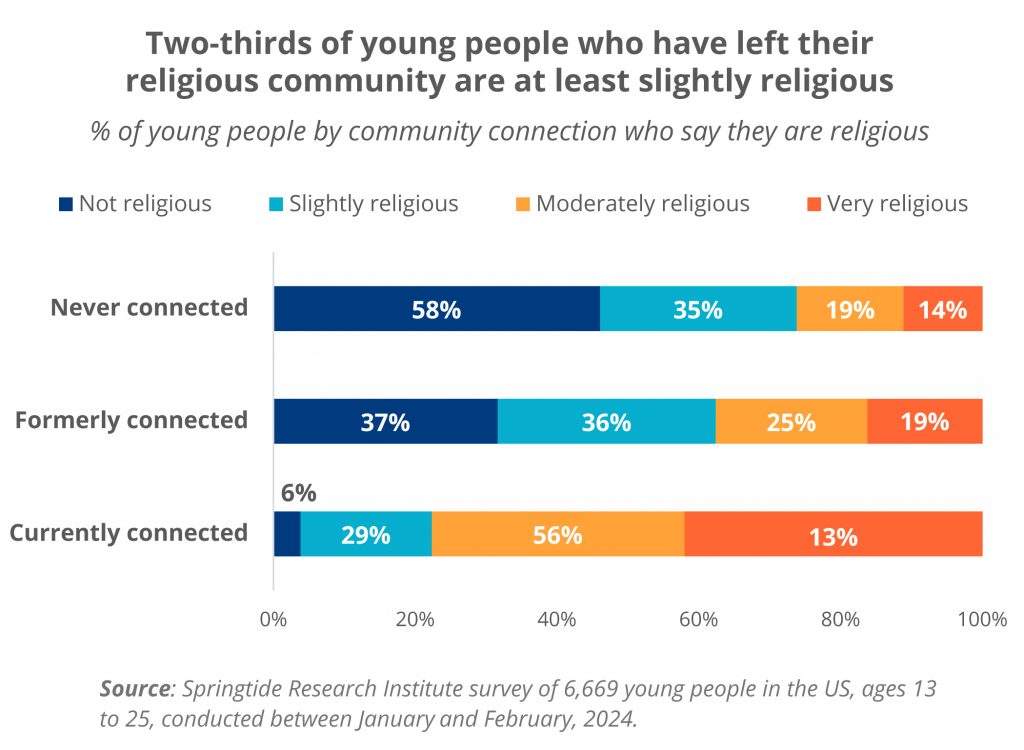
Nearly three-quarters (71%) of the currently connected pray at least weekly, including 45% who pray daily. Those who have never been connected are the least likely to pray regularly: just over a quarter pray weekly or more, while one-third (34%) say they never pray. Disaffiliated young people fall in between, with about one in five (21%) praying daily and 36% praying weekly or more.
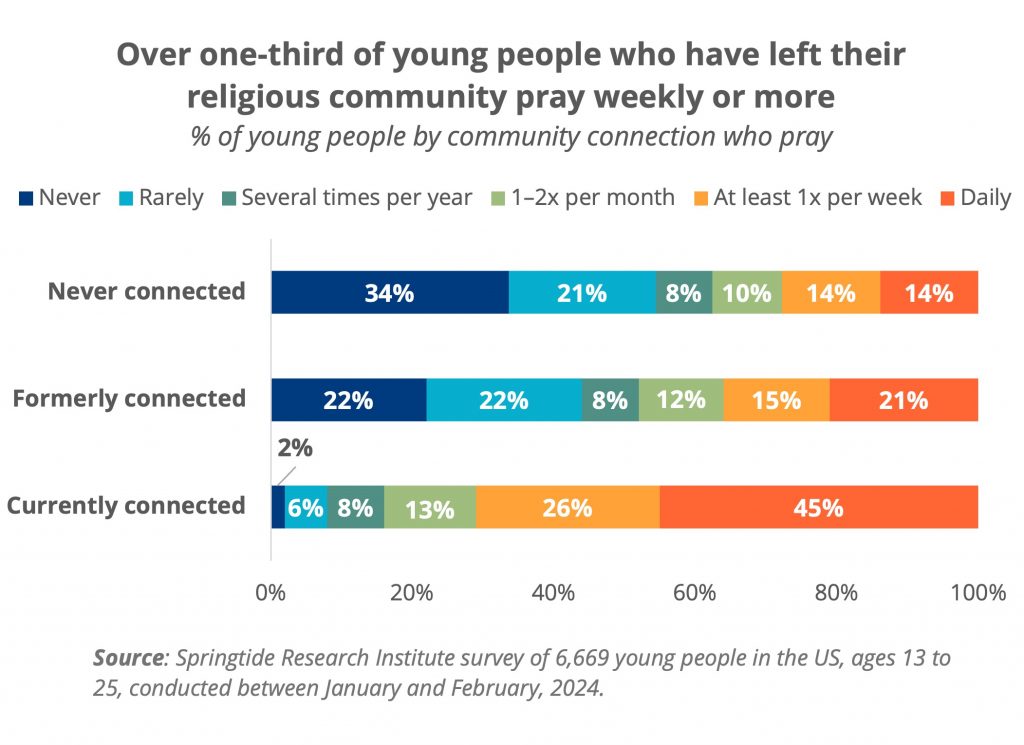
Belief in a higher power also persists after disconnection. Over one-third (35%) of the formerly connected express an undoubting belief in a higher power, while another third (32%) say they believe more than they doubt. Eight percent of the formerly connected reject belief entirely—more than those who are currently connected but less than those who never belonged to a religious community.
Connection to a higher power also varies by community ties. Half of disaffiliated young people (51%) report feeling moderately or very connected to a higher power. By contrast, 37% of the never connected feel that way. The currently connected are most likely to feel connected: 82% report feeling moderately or highly connected to a higher power.
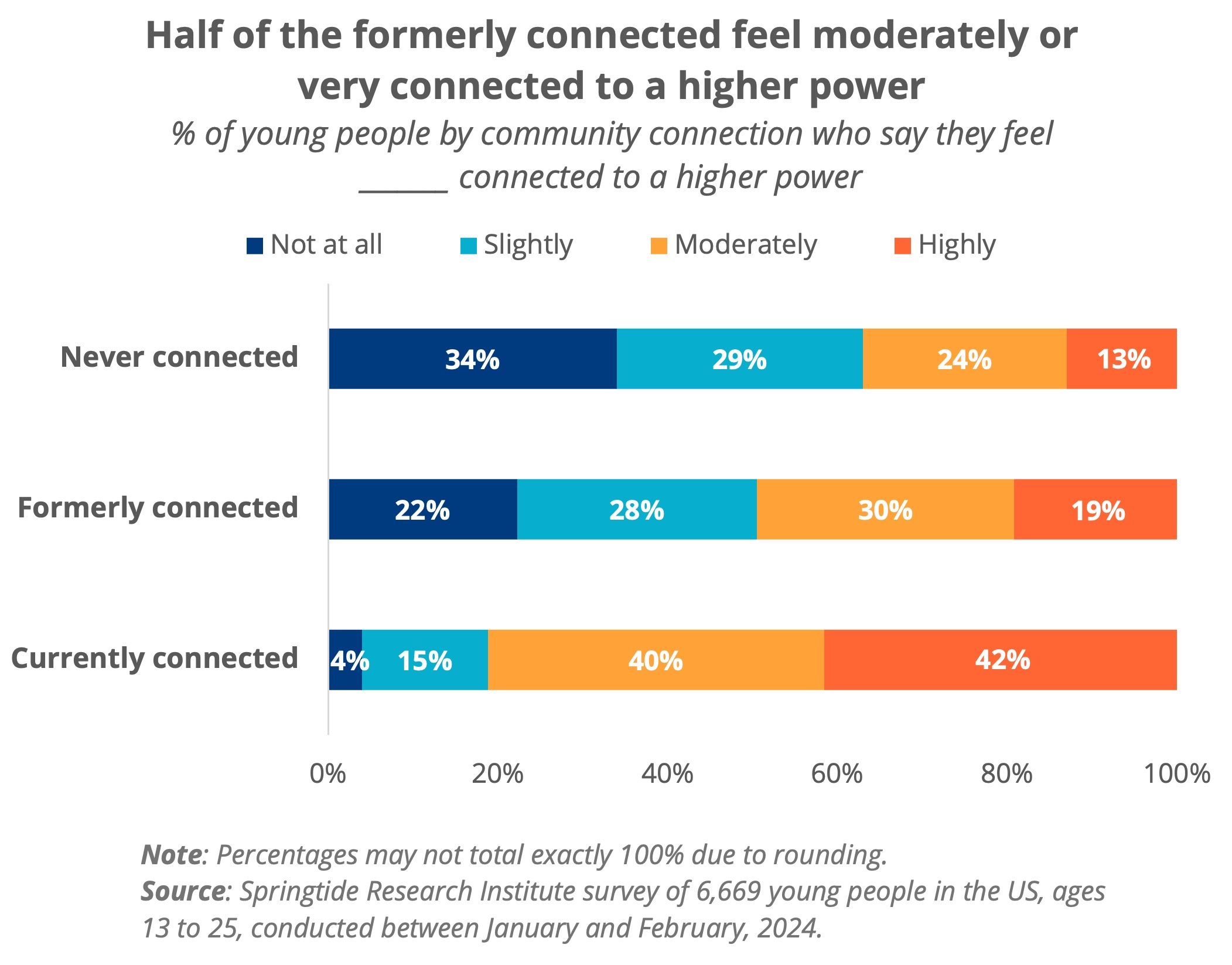
Losing Faith in Institutions
About two-thirds (68%) of the currently connected say they trust organized religion at least moderately. By contrast, only one-third (34%) of the formerly connected express that level of trust, and nearly three in ten (28%) say they do not trust organized religion at all. The never connected are most likely to report distrust.
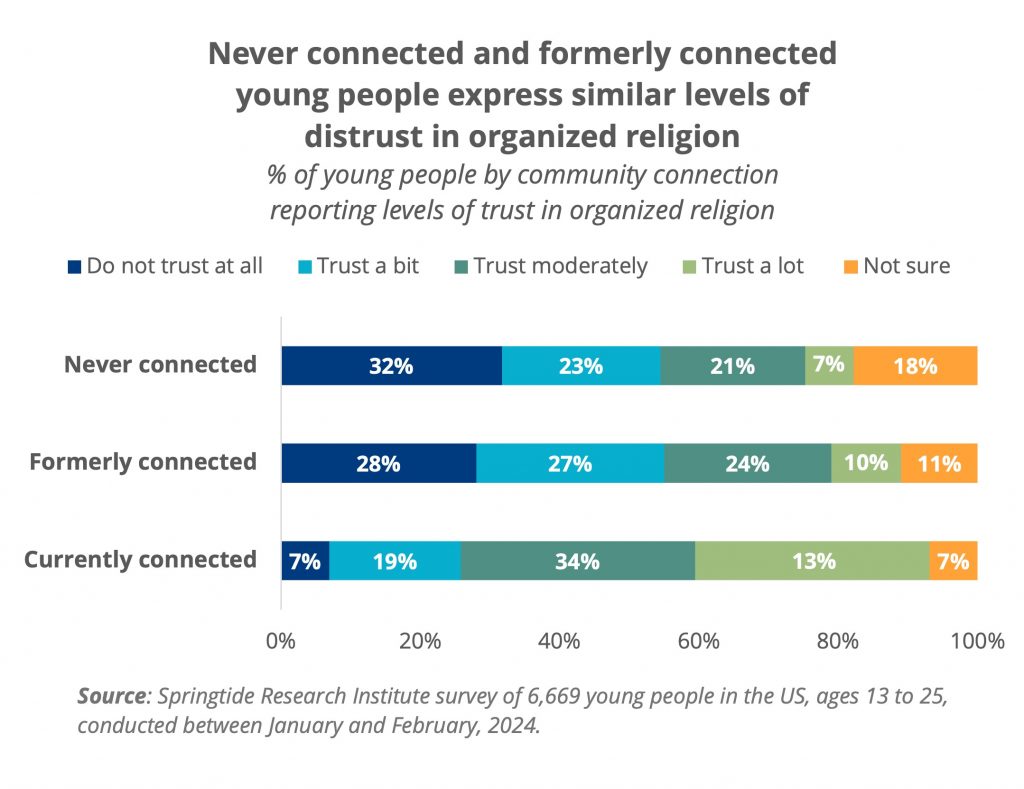
One reason why the formerly connected may lose trust in religious institutions is that they don’t feel those institutions truly care about what matters most to them. Among the currently connected, two-thirds (65%) say religious institutions care about their interests at least “somewhat,” while a quarter (26%) believe they care “very much.” The formerly connected are more skeptical: over a third (36%) say institutions care at least somewhat, while nearly three in ten (29%) say institutions do not care at all. Those who have never been connected are the most doubtful. Over half of these young people (55%) believe that religious institutions don’t care at all or care only a little about the things that matter to young people.
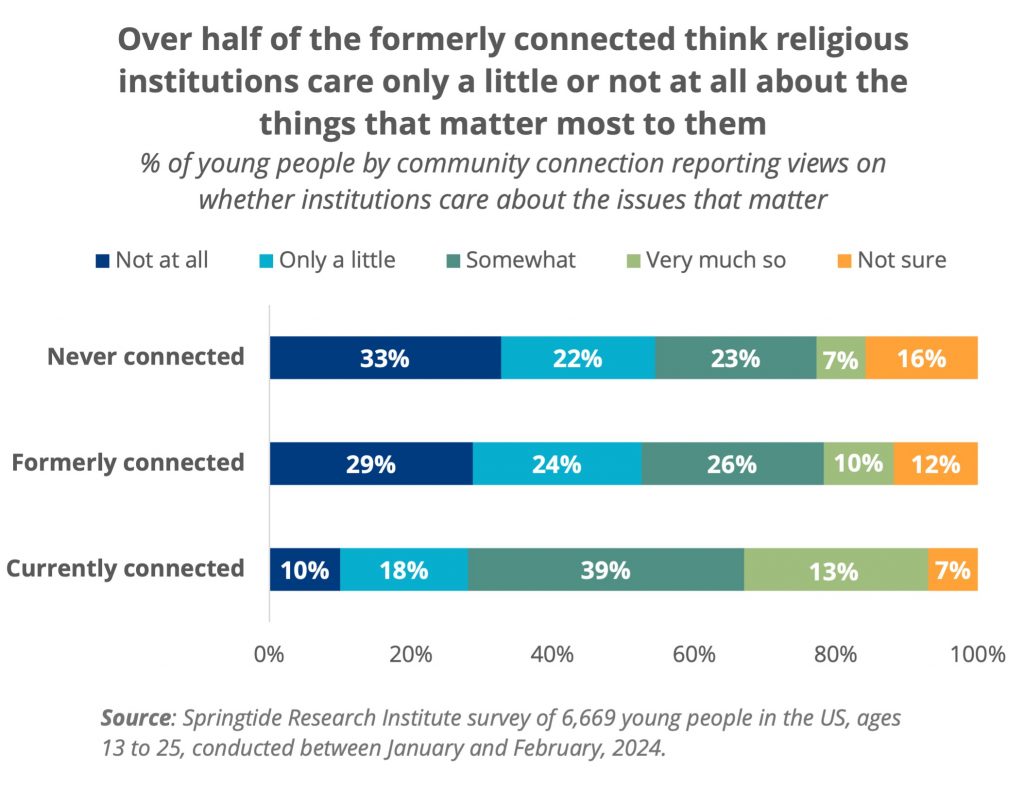
Young people don’t just “turn off” religion after leaving
Community life leaves a mark on those who have left their religious community. They do not suddenly look or act like those who never belonged. Instead, they occupy an in-between space—less religious than current members of religious communities, but more religious than those who were never connected. Many disaffiliated young people even continue to pray and believe in a higher power. However, this group of young people report distrust in religious institutions at rates that more closely resemble the never connected. These findings suggest that while some of the formerly connected may become after leaving their religious community, others reposition their faith outside of these institutions. The extent to which young people trust religious communities and believe those communities care about their interests may be important factors in differentiating between who stays and who goes.
Note: Data presented in this Data Drop come from the 2024 Springtide Study of Young People and Civic Life. See question wording and survey responses in the topline survey results and review methodology here.



